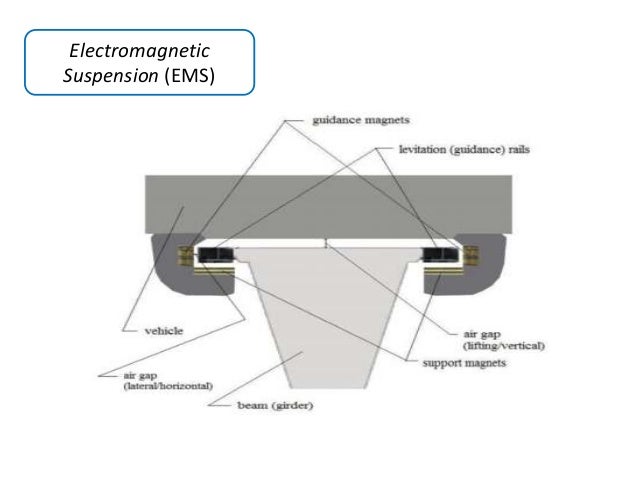2 main types of maglev systems
ElectroDynamic vs Electromagnetic
ElectroDynamic:
The electrodynamic suspension system
relies on superconductor electromagnets to create
powerful magnetic fields that levitate the train as
much as 10cm off the track. As mentioned in levitation these trains
require a velocity of about 100km/h (Or about 50mph)
before the induced magnetic field is strong enough
to lift the train. Once lifted though, the only
slowing factor these trains experience is the drag
from the passing air. These creates an incredibly
fast and smooth journey for the passengers. In fact
the highest velocity recorded so far was 375mph
achieved in Japan. One benefit of this system is
that it doesn't require constant monitoring due to
the flux pinning that occurs due to the
superconductors. With EMS the magnetic fields are
constantly changing and is inherently unstable and
thus requires constant monitoring and a computer to
make sure that it does not hit the guideway and
damage the train or the track.

The downside to this is the expensive refrigeration
process. Superconductors require extraordinarily low
temperatures to operate and if they do not maintain
this critical temperature the system will fail to
generate the appropriate magnetic field.
The extremely strong magnetic field that is produced
by the superconductors also make shielding required
as passengers with medical equipment like a pace
maker or even a hard drive on them may have their
devices disrupted.
ElectroMagnetic Suspension (EMS):
With electromagnetic suspension there is
no refrigeration and the system relies on
conventional electromagnets. With this structure the
train actually wraps around the track and has
magnets on the side of the track to keep the train
centered. As long as current flows through the track
this train will remain levitating regardless of it's
velocity. This means that it does not require a
"running start" as the EDS system requires making it
more efficient in terms of friction avoidance. This
system is only slowed by air as well and reaches
extraordinarily high speeds as well. It also
requires no shielding as the magnetic fields are not
powerful enough to interfere with passenger's
equipment or medical devices.

The downside to this system is that it requires
constant monitoring. The magnetic fields are not
pinned due to superconductors so it is constantly
wavering through minute changes and the gap between
the train and the track is about 10mm so there is a
minute amount of wiggle room. To compensate for this
a computer monitors this distance and adjusts the
train so that no contact occurs.